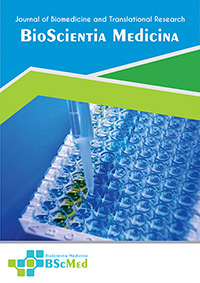Main Article Content
Abstract
Background: Pancreatic lipomatosis (PL), characterized by the replacement of pancreatic acinar tissue with mature adipose cells, is an uncommon condition with an etiology that is often not fully understood. It is frequently identified incidentally during imaging studies. The aim of this case report is to contribute to and advance the clinical understanding of this exceedingly rare and atypical presentation of pancreatic lipomatosis.
Case presentation: This report details the case of a 34-year-old female who presented for evaluation of nonspecific, intermittent epigastric discomfort. Her medical history was devoid of significant illnesses, alcohol abuse, or known genetic conditions predisposing to pancreatic disorders. Comprehensive laboratory evaluations, encompassing serum amylase, lipase, liver function tests, lipid profile, and HbA1c, yielded results entirely within normal parameters. Abdominal computed tomography (CT) imaging revealed a striking diffuse, homogeneous fatty replacement of the entire pancreatic parenchyma, a hallmark of total pancreatic lipomatosis. Importantly, there was no evidence of pancreatic ductal dilatation, calcifications, or any discrete pancreatic masses. The patient's management was conservative, involving lifestyle counseling and scheduled periodic monitoring for the potential, though infrequent, development of complications such as exocrine pancreatic insufficiency or secondary diabetes mellitus.
Conclusion: This case distinctly illustrates the occurrence of extensive pancreatic lipomatosis in a young, otherwise healthy female lacking classical risk factors. The pivotal role of cross-sectional imaging, specifically CT, in accurately diagnosing this benign condition is emphasized, which is crucial for averting misdiagnosis and precluding unnecessary invasive interventions. Enhanced awareness among clinicians is vital for appropriate patient counseling, the implementation of conservative management strategies, and diligent long-term monitoring for any potential metabolic or functional sequelae.
Keywords
Article Details
As our aim is to disseminate original research article, hence the publishing right is a necessary one. The publishing right is needed in order to reach the agreement between the author and publisher. As the journal is fully open access, the authors will sign an exclusive license agreement.
The authors have the right to:
- Share their article in the same ways permitted to third parties under the relevant user license.
- Retain copyright, patent, trademark and other intellectual property rights including research data.
- Proper attribution and credit for the published work.
For the open access article, the publisher is granted to the following right.
- The non-exclusive right to publish the article and grant right to others.
- For the published article, the publisher applied for the Creative Commons Attribution-NonCommercial-ShareAlike 4.0 International License.





